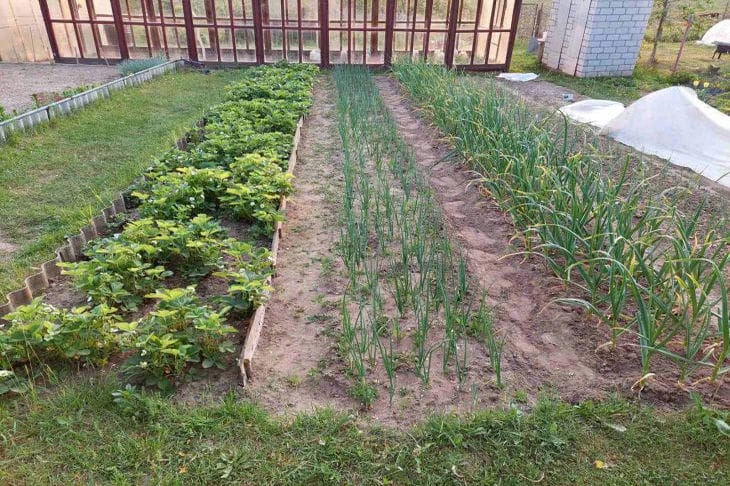How to use potassium permanganate in the garden: secrets of experienced gardeners for a rich harvest
Potassium permanganate, or potassium permanganate, is known to many as an antiseptic.
However, experienced gardeners know that this substance can be extremely useful in the garden.
From soil disinfection to pest control, potassium permanganate can solve many problems on the site.
Soil disinfection
One of the main uses of potassium permanganate in the garden is soil disinfection. Before sowing seeds or planting seedlings, it is recommended to water the beds with a weak solution of potassium permanganate (1-2 grams per 10 liters of water).
This will help destroy pathogenic microorganisms and prevent the development of fungal diseases.

Preparing seeds for sowing
Treating seeds with a solution of potassium permanganate before sowing can significantly increase their germination and protect future plants from diseases.
To do this, the seeds are soaked in a weak solution (0.5 grams per 1 liter of water) for 20-30 minutes, then washed with clean water and dried before sowing.
Pest control
Potassium permanganate is effective in combating some types of pests. For example, to repel a mole cricket, you can water its passages with a solution of medium concentration (3 grams per 10 liters of water).
The same solution can help in the fight against aphids and spider mites when sprayed on plants.
Prevention of fungal diseases
Regular spraying of plants with a weak solution of potassium permanganate (1 gram per 10 liters of water) helps prevent the development of many fungal diseases, such as late blight, powdery mildew and gray mold. This measure is especially effective for tomatoes, cucumbers and potatoes.
Fertilizer and growth stimulation
In small concentrations, potassium permanganate can serve as a fertilizer, enriching the soil with manganese, which is necessary for photosynthesis and metabolism in plants.
Watering with a weak solution (0.5 grams per 10 liters of water) once every two weeks can stimulate the growth and development of plants.
Treatment of greenhouses and hotbeds
Before the start of the season, it is recommended to treat greenhouses and hotbeds with a solution of potassium permanganate for disinfection.
This will help get rid of fungal spores and bacteria left over from the previous season. For this purpose, a solution of medium concentration (5 grams per 10 liters of water) is used.
Plant Treatment
At the first signs of plant disease, you can carry out emergency treatment of the affected areas with a concentrated solution of potassium permanganate (10 grams per 1 liter of water).
This is especially effective in combating black leg in seedlings and some types of rot.
Storage of the harvest
Potassium permanganate can help preserve the harvest for a long time.
Before storing, vegetables and fruits can be briefly immersed in a weak solution of potassium permanganate (1 gram per 10 liters of water), which will prevent the development of mold and rot.
Precautionary measures
When using potassium permanganate in the garden, it is important to remember the safety precautions.
The concentrated solution can cause burns to the skin and mucous membranes, so you should work with it wearing gloves and protective glasses. In addition, overdosing should be avoided, as this can lead to inhibition of plant growth.
Alternatives to potassium permanganate
Despite the effectiveness of potassium permanganate, some gardeners prefer to use more environmentally friendly alternatives.
These include infusions of garlic, nettle, and horsetail, which also have antiseptic and stimulating properties. The choice of remedy depends on the specific situation and the gardener's preferences.
